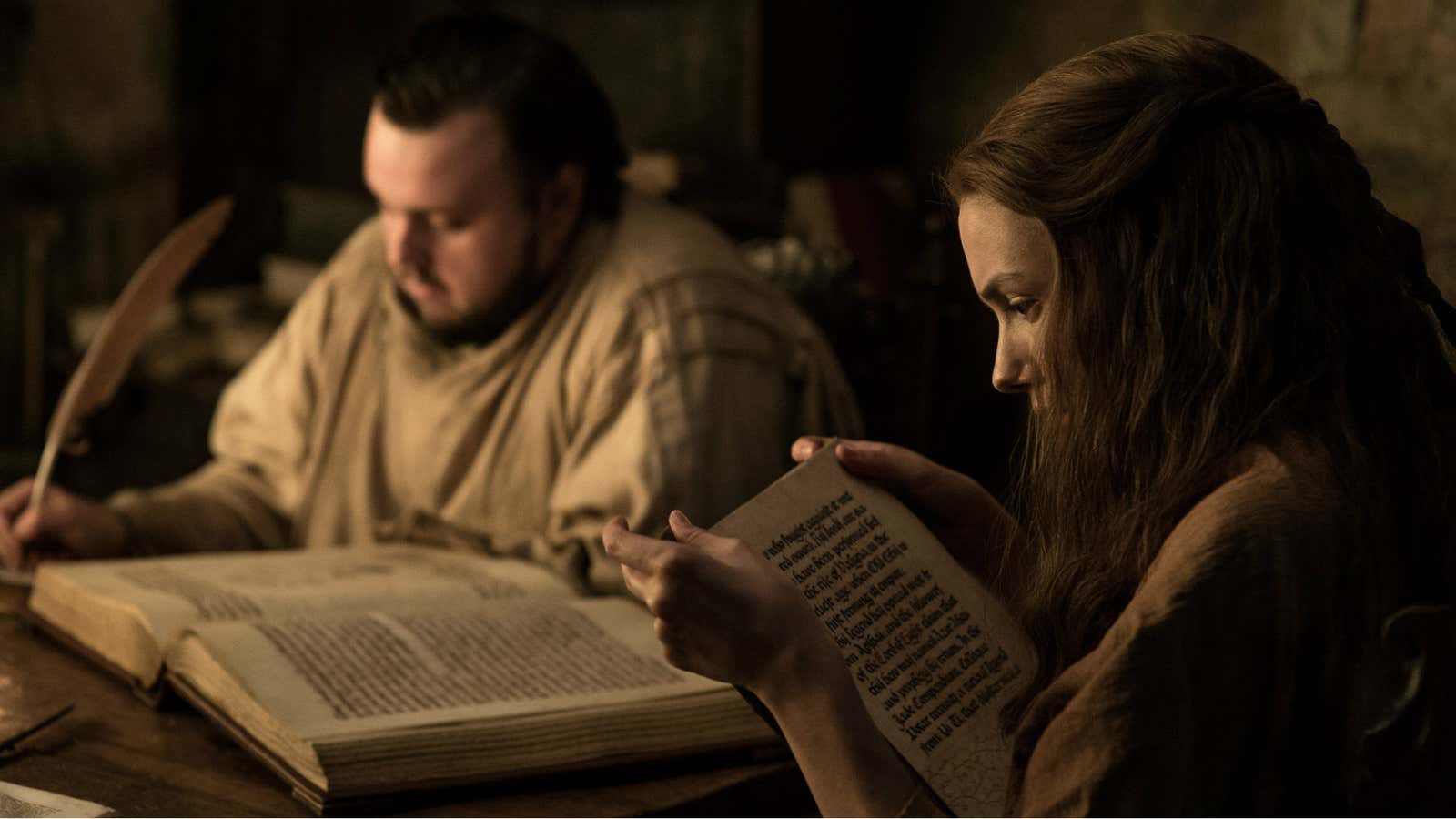Of all Monday morning Game of Thrones recaps, one of the most delightfully esoteric can be found on the Instagram and Tumblr accounts of the Getty museum in Los Angeles.
Since the start of the HBO show’s fourth season in 2014, assistant curator of medieval manuscripts Bryan C. Keene has recapped every episode with 10 images or objects corresponding to its themes.
For the July 30 episode, “The Queen’s Justice,” Keene posted a gilded 15th century French painting of prisoners being paraded through a city like Euron Greyjoy’s unfortunate captives; a 12th century illustration of three fierce dragons; and a photograph of obsidian arrowheads—a reference to dragon glass, the mythical material that’s like Kryptonite to the zombie army closing in from the north.
The posts are a hit. Apparently the HBO show has a lot of fans among the Getty’s 154,000 Instagram followers.
“We do get emails all the time now that are like, ‘Oh, do you have any images that are like when Melisandre gives birth to the Shadow?’ Oh, yes, there are plenty of images like that,” Keene said. “There is nothing in Game of Thrones that is unimaginable in a medieval context.”
The popular television show, set in an alternate reality that bears some resemblance to medieval times, has spurred academic interest in the real Middle Ages. Harvard offers a Game of Thrones-themed medieval studies course; academic publishing houses have produced volumes of scholarship inspired by the show. One doctoral candidate in medieval studies at the University of Oxford told Time the show motivated him to pursue the degree.
Keene has been enthusiastic about using the show as both an opportunity to share rarely-seen items from the museum’s collection, and to educate people about real life in the Middle Ages. He also blogs about historical parallels to the show’s bloody machinations, although he and other medieval scholars point out that the actual Middle Ages were more racially and culturally diverse than the fictional world of Westeros.
“Medievalists look at [Game of Thrones] as this dystopia of time in the Middle Ages,” Keene said. “Now I’m just impatiently waiting for the books to finish, and hoping the HBO series never finishes.”
The show is set to end after one more season, but that doesn’t mean Keene and other medieval-enthusiasts have to say goodbye to its universe forever: HBO announced plans in May to develop four spin-off series with the show’s creator and books’ author, George R. R. Martin.
